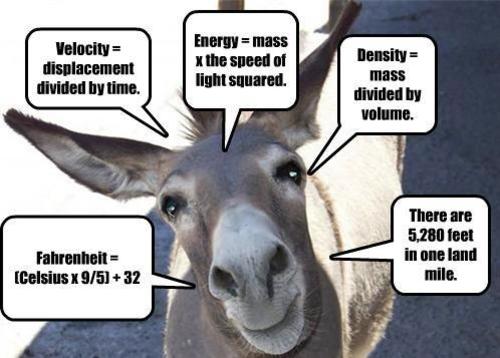Displacement Is Not that easy....
 The displacement of a particle moving in straight line is described by the relation S=6 +(12
t) - (2
t*t) .Find the distance moved by the particle in first 5 seconds?
The displacement of a particle moving in straight line is described by the relation S=6 +(12
t) - (2
t*t) .Find the distance moved by the particle in first 5 seconds?
Note: S is in meter,t is in seconds
This section requires Javascript.
You are seeing this because something didn't load right. We suggest you, (a) try
refreshing the page, (b) enabling javascript if it is disabled on your browser and,
finally, (c)
loading the
non-javascript version of this page
. We're sorry about the hassle.
6 solutions
Ahhh....I missed the initial position..I almost feel like crying :(
the same way I did........
oops! just forgot to deduce the initial 6m from 32m...
Without differentiating how can u solve it ?????
Log in to reply
Why does this method not please you?
I used a method that explains the question well ,by the way differential method is also a way to solve this question
Log in to reply
ankoor is right. u can not slve it without differentiation. ur answer came right because on differentiating the velocity is coming zero at 3(integer). if it had been a fraction, u would have reached at wrong answer.
Log in to reply
@A Former Brilliant Member – Yes you are correct but this equation follows a const. behavior for a time period of 1 sec i.e. it either moves in +ve(increase in distance) or -ve(decrease in distance) direction so even if we do not differentiate the eqn. we get the right answer. But some quadratic and cubic eqn. do not follow this kind of behavior so differentiation becomes necessary.
u r right. u can not solve it without differentiation. his answer came right because on differentiating the velocity is coming zero at 3(integer). if it had been a fraction, he would have reached at wrong answer.
Differentiate the given equation of displacement w.r.t time we got 12-4t which is equation of velocity. Velocity becomes zero at t=3 sec. So total displacement at 3 sec. is 24m and from initial position that is from t=0 sec displacement is 24-6=18m. At t=5sec. total displacement is 16m and from t=3 to t=5 distance traveled is 24-16=8m. Thus total distance traveled is 18m + 8m = 26m
I did not thought it was displacement
conceptual question !!!!!!!!
Calcuated displacement >.< Small small details matter ..
The
quadratic
equation of displacement has a
maxima
which occurs at
t
=
3
.
Displacement at
t
=
0
= 6
Displacement at
t
=
3
= 24
Displacement at
t
=
5
= 16
Total Distance = (
Positive displacement
from
t
=
0
t
o
3
) + (
Negative displacement
from
t
=
3
t
o
5
) = 18 + 8 = 26
Take the derivative to get velocity. Integrate the absolute value of the velocity function from 0 to 5.
S=6+12t -(2t t) v=12-4t , v=0 after 3 seconds. a=-4 total distance traversed= 12 3- 1/2 4 (3 3) + 1/2 4* (2*2)=26
s = 6 + 12t - 2t^2, v = 12 - 4t, a = -4. At t = 0 vo = 12. At t = 3 v = 0. So at 3 s, the distance traveled is S3 = 36 - 18 = 18 m. Displacement in 5 s is S5 = 12 x5 + 0.5x(-4)25 = 10. So the total distance traveled is 18 + (18 - 10) = 26 m.
t=0 , s=6 t=1 , s=16 t=2 , s=22 t=3 , s=24 t=4 , s= 22 t=5 , s=16 hence dist moved is 6+ ( 22 - 16) + (24 - 22) + ( 24 - 22) + (24 - 16) = 26 m
For the correct answer we have to check the motion in each second:
Lets have a look, The important thing here is that S here defines the position of the particle at instant t.
when t=0 S=6. So we see initially the particle is not at zero but at 6m.
when t=1 S=16,so distance is 10m.
when t=2 S=22,so distance is 16m.
when t=3 S=24,so distance is 18m.
when t=4 S=22,here the particle has moved back 2 meter,so the distance is 20m.
when t=5 S=16,here the particle has moved back 6 meter again,so the distance is 26m.
So the final answer after 5 seconds (the distance moved) is 26 meter.